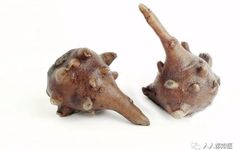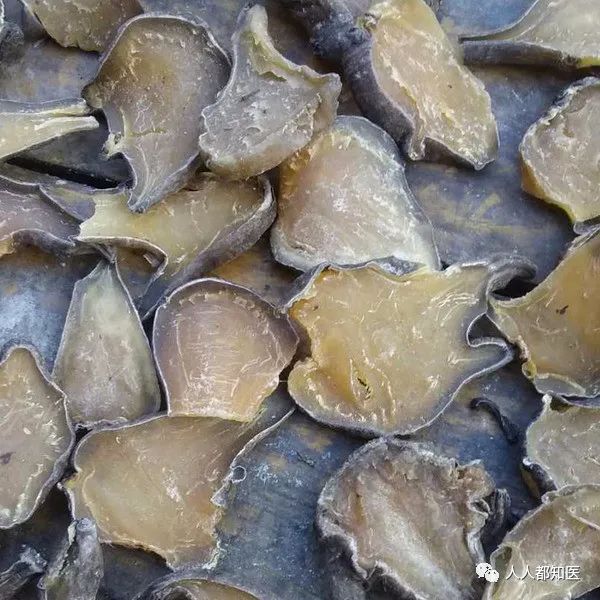
Fuzi (Aconite): Spicy, sweet, very hot; toxic. It belongs to the Heart, Kidney, and Spleen meridians.
Functions and Indications: Revives yang and rescues from collapse, supplements fire and assists yang, disperses cold and alleviates pain. “It is the foremost medicine for reviving yang and rescuing from collapse,” with a wide range of therapeutic effects.
Indicated for conditions such as excess yin obstructing yang, profuse sweating leading to yang deficiency, vomiting and diarrhea with cold extremities, cold limbs with weak pulse, abdominal pain due to cold, cold dysentery, edema from foot qi, wind-cold-damp bi syndrome, impotence, cold in the uterus, deficiency-cold vomiting and diarrhea, yin-cold edema, yang deficiency with external pathogens, yin sores and ulcers, and all diseases characterized by deep-seated cold.
Preparation Methods:
This product is processed from the tuberous roots of the Ranunculaceae plant Aconitum. It is harvested from late June to early August, with the mother root, fibrous roots, and soil removed, commonly referred to as “mud Fuzi,” and processed into the following varieties.
(1) Select large, uniform pieces of mud Fuzi, wash clean, soak in a solution of edible gall water overnight, then add salt and continue soaking, taking out and drying in the sun daily, gradually extending the drying time until a large number of crystalline salt particles (salt frost) appear on the surface of Fuzi, and the texture becomes hard, commonly referred to as “salt Fuzi.”
(2) Take mud Fuzi, wash according to size, soak in a solution of edible gall water for several days, boil with the soaking liquid until thoroughly cooked, remove, rinse, cut into slices about 0.5 cm thick, soak in water, dye with a coloring solution to a dark tea color, then steam until an oily surface and gloss appear, dry until semi-dry, and then sun-dry or continue to dry, commonly referred to as “black shun slices.”
(3) Select uniform-sized mud Fuzi, wash clean, soak in a solution of edible gall water for several days, boil with the soaking liquid until thoroughly cooked, remove, peel, cut into slices about 0.3 cm thick, soak in water, steam until cooked through, and dry, commonly referred to as “white Fu slices.”
(4) Light Fu slices: Take salt Fuzi, soak in clean water, changing the water 2-3 times daily, until the salt is completely leached out, then cook with licorice and black beans until thoroughly cooked, until there is no numbness when tasted, remove, discard licorice and black beans, cut into thin slices, and dry. For every 100 kg of salt Fuzi, use 5 kg of licorice and 10 kg of black beans.
(5) Pao Fu slices: Place river sand in a pot, heat over a strong fire, add Fu slices, stir-fry until puffed and slightly changed in color, then remove and sift out the river sand, cool.
According to the “Shennong Bencao Jing”: It is indicated for wind-cold cough, warming the middle, treating traumatic injuries, breaking up accumulations, blood stasis, cold-dampness, and knee pain with contraction, leading to inability to walk.
According to the “Bencao Yanyi”: Aconite, Aconitum, Tianxiong, and Fuzi are all the same substance, differing only in size, length, and appearance. In later generations, for treating deficiency-cold, Fuzi must be used, selecting those that are flat, round, and weigh more than half a tael, as they are fully potent. The wind family often uses Tianxiong, also selecting the larger ones, as their sharp angles are more heat-inducing and do not descend, hence they are used for dispersing. This is the general use of Aconite and Fuzi. The other three types are used according to their material properties.
Zhu Zhenheng: For those with severe qi deficiency and heat, it is advisable to use less Fuzi in conjunction with Ren Shen (Ginseng) and Huang Qi (Astragalus). Fat individuals with dampness should also use less Aconite and Fuzi to promote circulation. The “Yanyi” discusses five types of Fuzi, all of which are the same substance, named according to their shape. This is indeed profound, yet still not fully understood. In the “Shanghan Lun,” the Eight Flavor Pill uses Fuzi as a guide for the Shaoyin, with its supplementation primarily from Dihuang (Rehmannia), and later generations mistakenly regard Fuzi as a tonic. The nature of Fuzi is to move and not to hold, but it is used for its vigorous and assertive nature to promote the stagnation of Dihuang, which can lead to distant effects.
Yu Tuan: Fuzi possesses a robust quality, with the ability to break through barriers and seize opportunities, capable of guiding qi tonics through the twelve meridians to restore lost original yang; guiding blood tonics into the blood to nourish insufficient true yin; promoting dispersing medicines to open the pores and expel exterior wind-cold; and guiding warming medicines to the lower jiao to eliminate internal cold-dampness.
According to the “Bencao Huiyan”: Fuzi revives yang qi, disperses yin-cold, expels cold phlegm, and is a powerful medicine for opening the joints. For all diseases characterized by insufficient true yang, rising deficiency fire, throat discomfort, inability to eat, and worsening symptoms with cold medicines, Fuzi is the main medicine for the gate of life, capable of entering its cave and summoning it back, guiding fire back to its source, thus extinguishing the floating fire. For all conditions of yang deficiency and extreme yin, and for those with no heat in the lungs and kidneys, taking it has remarkable effects in reviving the dead.
Guo Shengbai: Fuzi is revered in TCM as one of the four great monarch medicines. In the “Shanghan Lun, Shaoyin Disease” section, there is a vivid description of a condition of cardiac dysfunction: “The pulse is weak and about to cease, the limbs are cold and reversed, with aversion to cold and a curled body.” This is precisely the main therapeutic indication for Fuzi, but how can Fuzi awaken cardiac function? Experimental evidence shows that Fuzi has the basic function of invigorating cardiac function, thus it is the holy medicine for reviving yang and rescuing from collapse. Yu Bo summarizes Fuzi as follows: “Fuzi possesses a robust quality, with the ability to break through barriers and seize opportunities, capable of guiding qi tonics through the twelve meridians to restore lost original yang; guiding blood tonics into the blood to nourish insufficient true yin; promoting dispersing medicines to open the pores and expel exterior wind-cold; and guiding warming medicines to the lower jiao to eliminate internal cold-dampness.” In Yu’s description, Fuzi addresses everything from qi to blood, from exterior to interior. However, the efficacy of Fuzi is entirely based on its cardiac strengthening effect. Fuzi can be used raw or processed: raw use is potent and fierce, while processed use is milder. In the “Shanghan Lun,” whenever Fuzi is included in dispersing agents, it should be processed: such as in Mahuang Fuzi Xixin Decoction, Mahuang Fuzi Licorice Decoction, and the original formula. Whenever used in reviving yang and rescuing from collapse, it should be used raw: such as in Si Ni Decoction, Bai Tong Decoction, etc. Similarly, Fuzi Decoction, Zhenwu Decoction, Guizhi Fuzi Decoction, Licorice Fuzi Decoction, and Fuzi Xiexin Decoction are also processed. From Zhang Zhongjing’s medication principles, in critical conditions, raw use is to seek rapid efficacy; in less urgent conditions, processed use is to obtain a milder drug nature.
Dosage: 3-15 g per day, should be decocted first for 30 minutes to 1 hour, based on the absence of a numbing or spicy sensation when tasted.
Precautions: Should not be used with Banxia (Pinellia), Gualou (Trichosanthes), Tianhuafen (Trichosanthes), Beimu (Fritillaria), Bai Lian (Nymphaea), and Bai Ji (Bletilla). Dosage should be adjusted according to individual conditions; excessive use can be harmful, as Fuzi contains toxic components such as aconitine, which primarily affects the myocardium, vagus nerve, and peripheral nerves, causing symptoms of poisoning such as numbness of the tongue, limb numbness, a crawling sensation, dizziness, blurred vision, nausea, vomiting, and in severe cases, can be life-threatening.
Detoxification Methods for Fuzi:
Honey can also detoxify Fuzi, but is not suitable for acute poisoning.
Roasted licorice and radish decoction are particularly effective in detoxifying Fuzi.
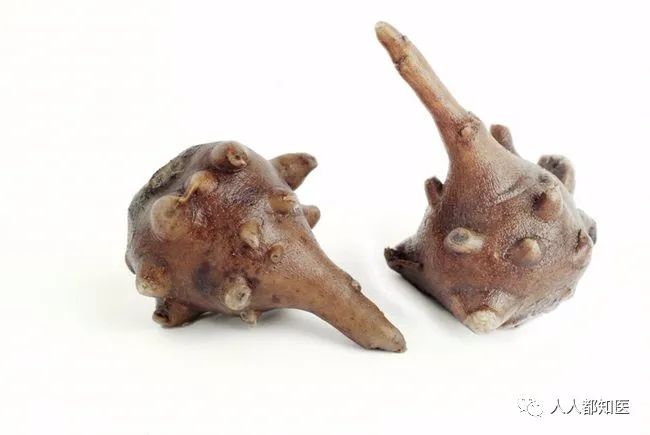
1: “In Shaoyin disease, the pulse is weak and thin, but the patient desires sleep.” “In Shaoyin disease, when the limbs are cold and reversed, with aversion to cold, body pain, and joint pain, the pulse is deep, Fuzi Decoction is indicated.” (“Shanghan Lun”)
Fuzi Decoction: 2 pieces of Fuzi (processed), 42 g of Fuling (Poria), 28 g of Ren Shen (Ginseng), 56 g of Bai Zhu (Atractylodes), and 42 g of Shao Yao (Peony). Combine these five ingredients with 1600 ml of water, boil down to 600 ml, strain, and take 200 ml warm, three times a day.
This is a classic case. The term “Shaoyin disease” refers to a functional disease characterized by reduced organ function and fluid deficiency. A weak pulse indicates that the radial artery has become thin and lacks elasticity, indicating extremely low cardiac function, on the verge of circulatory failure. Thus, “but desires sleep” indicates an inability to fall asleep, merely closing the eyes, showing a lack of spirit, which is a manifestation of cerebral ischemia. “Cold limbs” indicates that the hands and feet are icy beyond the elbows and knees, with a body temperature of around 35°C, and the patient feels cold all over, with body and joint pain due to ischemia. A deep pulse indicates that the radial artery is deeply buried due to insufficient circulation, which is a manifestation of extremely weak peripheral circulation. This case represents severe cardiac dysfunction and circulatory failure, requiring treatment with “Fuzi Decoction.”
Fuzi Decoction is a classic first formula for autonomic regulation. Fuzi assists yang, capable of initiating the heart’s autonomous movement, thus it has a cardiac strengthening effect. Ren Shen supplements qi and generates pulse, enhancing the organ’s autonomous power, and generating pulse refers to increasing circulation volume to provide energy for movement, with power and energy interacting. In other words, Fuzi and Ren Shen complement each other, promoting a life movement of “yin and yang mutually rooted.” Fuling and Bai Zhu promote yang and facilitate water metabolism, as there is inevitably water retention in tissues after heart failure; Fuling and Bai Zhu promote yang and facilitate water metabolism to benefit circulation. Shao Yao promotes blood circulation, treating body and joint pain. Thus, this case is a typical endogenous disease of cardiac dysfunction and circulatory failure, and Fuzi Decoction is a formula for autonomic regulation.
2: “In Shaoyin disease, with clear diarrhea, cold limbs, weak pulse, or abdominal pain, or dry retching, or throat pain, or if the pulse does not come out, Tongmai Si Ni Decoction is indicated.” (“Shanghan Lun”)
The previous case of Shaoyin disease with Fuzi Decoction indicates cardiac dysfunction and peripheral tissue circulation deficiency, while this case of Shaoyin disease indicates that cardiac dysfunction has extended to the gastrointestinal tract. Clear diarrhea indicates severe ischemia in the abdominal cavity and gastrointestinal tract, where food cannot be digested and absorbed, leading to undigested food being expelled. Cold limbs below the elbows and knees, with a pulse that is weak to the point of almost ceasing, indicates that circulation is on the verge of failure. This ischemic condition causes the gastrointestinal tract to spasm due to insufficient blood supply, leading to abdominal pain and dry retching. If diarrhea has stopped, the pulse is also absent, indicating that the contents of the intestines have been emptied, and body fluids are further depleted due to diarrhea, leading to a pulse that is absent, indicating that circulatory failure has occurred, but “Tongmai Si Ni Decoction” can still be used for treatment.
Tongmai Si Ni Decoction: 1 piece of Fuzi (large, raw), 42 g of Gan Jiang (Dried Ginger), and 28 g of Gan Cao (Licorice). Combine these three ingredients with 600 ml of water, boil down to 240 ml, strain, and take warm; if the pulse appears, the patient recovers.
Fuzi assists yang, being the first excellent medicine for initiating autonomous movement. In “Fuzi Decoction,” it is processed, while in “Tongmai Si Ni Decoction,” it is used raw. Processed use is milder, while raw use is fierce and rapid. Cold limbs with a pulse that is absent, clear diarrhea, abdominal pain, and dry retching indicate a very critical condition. To seek rapid efficacy, raw Fuzi is used to quickly initiate autonomous movement. Zhang Zhongjing states, “If the pulse appears, the patient recovers.” The so-called pulse appearing indicates the restoration of cardiac function and the normalization of blood supply to peripheral tissues, thus indicating recovery from illness.
3: Student: What is the difference in usage between raw and processed Fuzi?
Guo Lao: Let me explain the usage of raw and processed Fuzi: Fuzi is highly toxic and its potency is robust, as described. It has the ability to break through barriers and seize opportunities, like a cavalry that is fast and brave, encountering a closed city gate, slaying the guards and opening the gate. There is further description; you see, I cannot say everything, it is a very good article. Why? Because the nature of Fuzi is fast, with a very fierce effect and toxicity. In non-critical situations, it is not necessary to use it. When it is processed, the toxicity is largely eliminated, but some remains, and it becomes milder, used for assisting yang and reviving yang, such as in Danggui Si Ni Decoction, Si Ni San with Fuzi, or other diseases with Fuzi, using processed Fuzi. In critical situations, as mentioned yesterday, when yin is extreme and yang is present, this is when circulation is about to decline, life and death are at stake, not just at risk, but life and death are in the moment. In this case, processed Fuzi is not suitable, as it acts slowly; regardless of its toxicity, we must first ensure survival, so we use raw Fuzi. The distinction between raw and processed is here, and there is no other distinction.
4: “True cold and false heat,” cold limbs, body temperature of 35 degrees. Hands and arms are cold beyond the elbows, legs and feet are cold beyond the knees, body temperature is around 35 degrees, with bowel movements occurring 20-30 times a day, abdominal pain, unable to eat or drink. When the waist is pressed, bowel movements occur, with persistent abdominal pain. Suddenly, the face turns red, indicating the presence of yang, “the face bears yang.” You see, there is fever, but the pulse is deep, weak, thin, and weak. The body is also heating up, this is “true cold and false heat,” right? This can happen quickly, perhaps in a few hours, or maybe ten or twenty hours, leading to death. If a large dose of “Si Ni Decoction” is used, with Fuzi, Gan Jiang, and Gan Cao, or “Congbai Si Ni Decoction” with scallions, body temperature gradually returns, diarrhea gradually stops, and there is hope for survival. If there is no doctor nearby, it is undoubtedly fatal!
5: Is there any rejection in Taiyin abdominal pain and diarrhea?
In Taiyin disease, abdominal fullness, pain, diarrhea, and clear stools, with abdominal pain occurring intermittently, this is Taiyin disease; this abdominal pain and diarrhea is not rejection. How do we know it is not rejection? The pulse is weak; what does a weak pulse mean? Deep, weak, thin, and powerless, indicating that the circulatory system is approaching failure, with low body temperature. Abdominal pain is due to severe blood supply insufficiency from circulatory failure, insufficient to maintain body temperature, leading to severe intestinal spasms. Due to ischemia and insufficient body temperature, food cannot be digested, leading to undigested food being expelled. From this, we can see that it is not rejection; this diarrhea is unrelated to rejection. What is the trend? It is precisely insufficient body temperature and circulatory failure, with low energy also tending towards failure. Is this not a trend of autonomic regulation? Body temperature should be raised, circulation should be improved, etc., so Si Ni Decoction, Gan Jiang, Fuzi, and then adding Ren Shen, called Ren Shen Si Ni Decoction, is this clear?
Student: Your understanding of Taiyin disease with abdominal pain and clear diarrhea is that the gastrointestinal circulation blood volume is insufficient, insufficient to digest and absorb the food ingested, so it is a protective instinct, instinctively expelling what has been ingested, I think this is also a protective rejection response?
Guo Lao: Rejection is the body’s response to foreign substances. If we were to forcibly say that bowel movements are foreign substances, then it would not be considered rejection. If in this Taiyin disease, this bowel movement is rejection, that would be a grave error. In this disease, we must use Fuzi and Gan Jiang to prevent further diarrhea; if it continues, it will lead to death, as yin and yang will separate. With limited body fluids, this bowel movement occurring ten or dozens of times a day, with undigested food, to what extent? If we ignore it, we will undoubtedly die. We must stop it; do not let it continue, do you understand? You see, the amount of Gan Jiang is significant; why is it called Si Ni Decoction? The three ingredients are Fuzi, Gan Jiang. One is hot, the other is yang; among all Chinese medicines, these are the two most potent. Fuzi is pure yang and very hot, with the ability to break through barriers and seize opportunities, particularly fast. There is another issue I must mention: you see Fuzi, processed Fuzi is used, why use raw Fuzi? Because its toxicity is greatly reduced after processing, so we use processed Fuzi. Why use raw Fuzi? The diseases treated with raw Fuzi are all very urgent, on the brink of life and death. In such cases, the pulse is already absent, body temperature has dropped to 35 degrees, and consciousness is unclear, with the pulse being almost absent or very weak. In this situation, we do not mind the toxicity; the efficacy must be exerted as quickly as possible, as life is at stake, so raw Fuzi is used. This is the distinction.
Another point, Fuzi supplements yang, replenishing yang qi, which enhances autonomic function. How can it enhance autonomic function? This must be said: it can strengthen circulation, increase circulation volume, and improve blood supply to various organs and tissues. As we all know, blood is the source of all functions, so when function is strong, autonomic activity increases. This instinct is a systemic activity involving multiple organs and tissues. If there is ischemia, there is no capacity. This is a characteristic of TCM behavior and expression, representing a macro perspective.
For example, TCM mentions some blood tonics and qi tonics. How can they replenish qi and blood? I know that blood transfusions replenish blood, which is absolutely true. You say that Guizhi can replenish blood; I do not believe it. So this is a difference in concept and method; it can indeed replenish blood.
I remember once, I mentioned this issue, and one of the attendees, who studies economics, said, “I understand what you mean; how do you understand? You say that a branch cannot replenish blood?” He said, “Just now, it was mentioned that it promotes blood circulation; when circulation speeds up, it replenishes blood, right?”
He said there is a theory in economics that he mentioned, which is similar to this; indeed, I said you are very correct. This is a common principle: when blood circulation speeds up, it increases. Why? Because I have cerebral ischemia; my heart is also ischemic. But if you want to replenish blood, you must draw blood from someone and test it; it must match my blood type before it can be transfused. Can you transfuse it in two hours? If you have it in the blood bank, you can match it; can you transfuse it in an hour? In any case, TCM does not have this capability or means; it cannot draw blood from others. It has its methods; I will give you this formula; take it, and when blood circulation speeds up, it brings oxygen. I have ischemia, which means I lack oxygen. Why do you not supply oxygen? My symptoms of ischemia will disappear. When blood circulation speeds up, it supplies more oxygen; just like a train running one week a day, I run ten weeks a day, bringing more goods, right? This is how TCM replenishes blood; this is a concept.
This Fuzi, it is a stimulant that can strengthen heart activity, increase circulation volume, and with this, it can treat many diseases, capable of reviving the dead. If your pulse is thin, you cannot feel it, consciousness is confused, and body temperature is low, what should you do? Strengthen the heart. At this time, no one dares to use strong heart methods; I have seen it; just this one Fuzi Decoction, or Si Ni Decoction, or Tongbai Si Ni Decoction, etc., heavily using Fuzi, taking it, body temperature recovers, the face turns red, and consciousness returns. This is its effect. If you have seen it a few times, I believe your perspective will change significantly.
Brother: Guo Lao, what is the dosage of Fuzi in Fuzi Decoction?
Guo Lao: The dosage of Fuzi is 1 piece; this piece can vary in size. This is not too strict. The common dosage I use is 12 g, 13 g, or 14 g, with a minimum of no less than 10 g and a maximum of no more than 15 g. It should be processed; processing can be done using talcum powder or sand, heating in a dry pot, similar to popping corn. This processing should be done once with heat; it should not burn, and a little char is acceptable.
7: I have heard of someone using Fuzi, perhaps 100 g or 150 g; I said, I do not wish to comment on this. Being untruthful in life and in scholarship is not practical. Is it necessary? Using 10 g, at most 15 g of Fuzi solves the problem; why use it in pounds? This is just to attract attention; is it useful? I see you using 100 g of Fuzi; if you do not die, it would be strange. Regarding the dosage issue, do not mind it; you can use less. How much did Zhang Zhongjing use in the Han Dynasty? It is not that you must use that much. You must remember that a great craftsman teaches people with rules; he teaches us the rules, and remember that it is the rules.
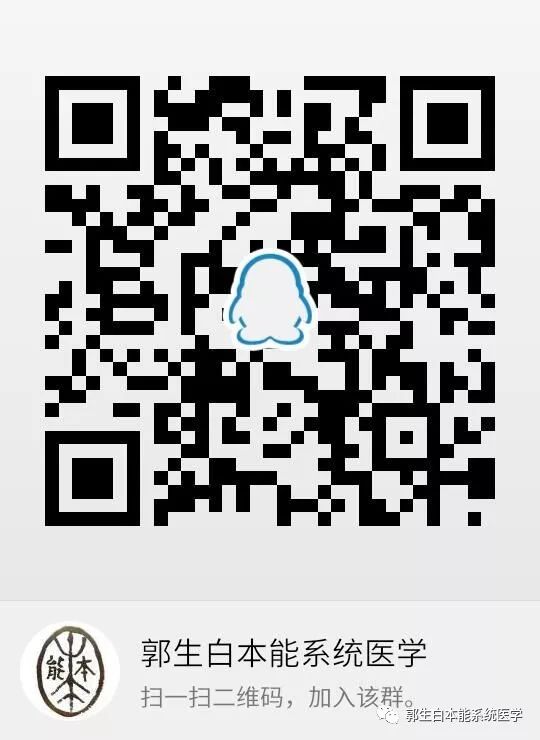
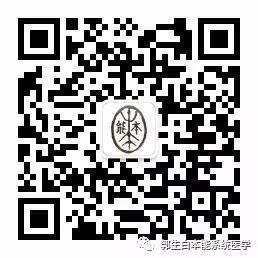 长按识别二维码关注我们
长按识别二维码关注我们

